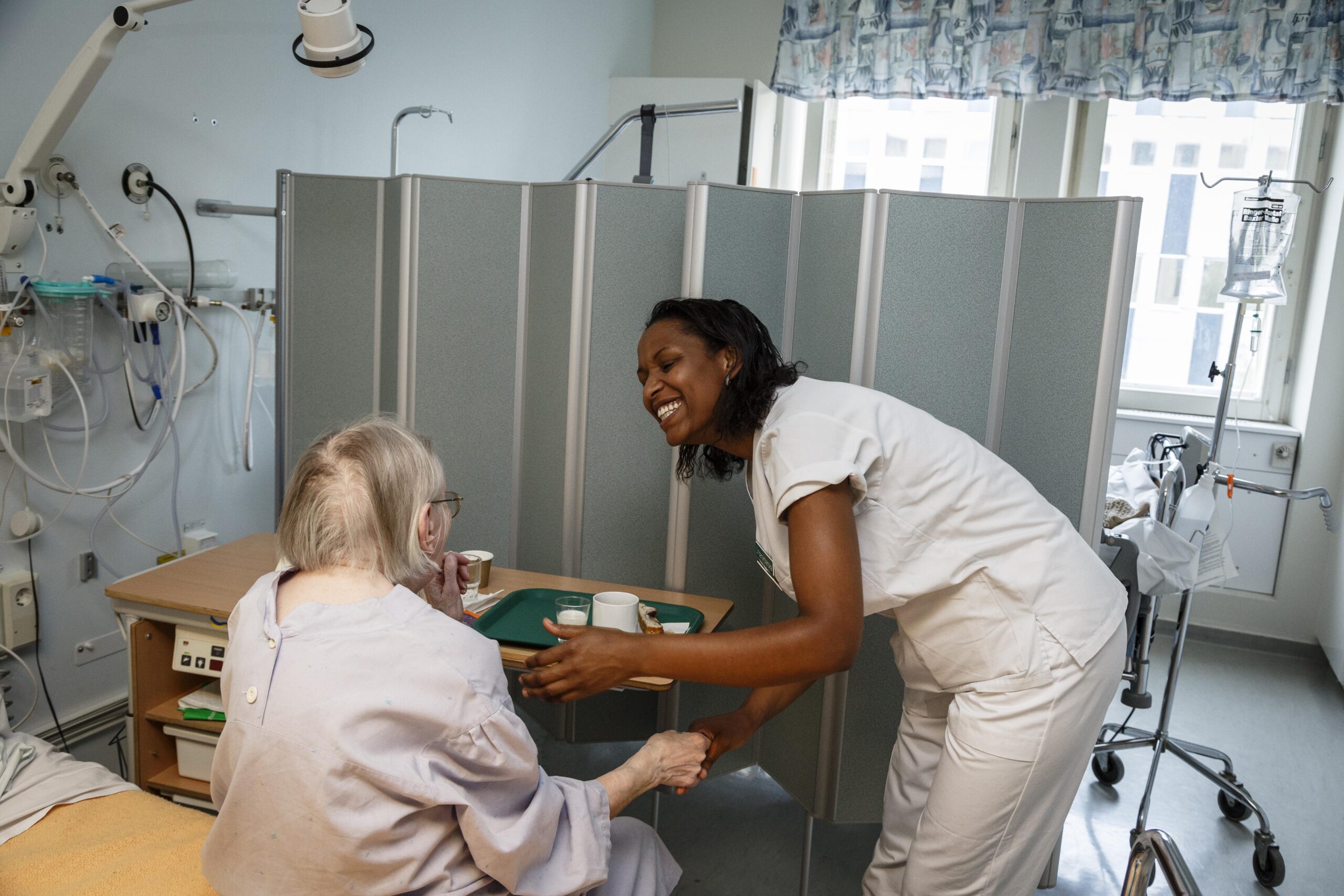
A systematic review of work interventions to promote safe patient handling and movement in the healthcare sector
A systematic review of work interventions to promote safe patient handling and movement in the healthcare sector
by Charlotte Wåhlin, Kjerstin Stigmar & Emma Nilsing Strid
Article related to the NIVA course on Safe Patient Handling and Movement, 18th – 20th of October 2022, Scandic Linköping City, Linköping, Sweden
Introduction
“Patient handling and movement (PHM) is one of the most common healthcare situations in which work-related musculoskeletal injuries occur. Until now, the scientific literature has mainly described outcomes such as work-related injuries in the lower back, neck and shoulder among healthcare workers such as nurses and nurse assistants. Frequent patient transfers, heavy lifting and patient mobilizations have been shown to be risk factors for lower back pain (LBP). The risk of musculoskeletal disorders (MSDs) and sickness absence is also reported to be high among occupational groups such as nurses and assistant nurses since their work is physically demanding. Organizational and social factors in the work environment, such as high workload or under-staffing, can also give rise to work injuries.[…]”
Abstract
Objectives. The aim of this systematic review was to describe interventions which promote safe patient handling and movement (PHM) among workers in healthcare by reviewing the literature on their effectiveness for work and health-related outcomes.
Methods. Databases were searched for studies published during 1997–2018. Measures were operationalized broadly, capturing outcomes of work and health. Only randomized controlled trials (RCTs) and cohort studies with a control group were included. Quality was assessed using evidence-based checklists by the Swedish Agency for Health Technology Assessment and Assessment of Social Services.
Results. The systematic review included 10 RCTs and 19 cohort studies. Providing work equipment and training workers is effective: it can increase usage. Training workers to be peer coaches is associated with fewer injuries. Other effective strategies are participatory ergonomics and management engagement in collaboration with workers, facilitating safe PHM.
Conclusions. This systematic review suggests that interventions for safe PHM with an impact of health-related outcomes should include access to work equipment, training as well as employer and employee engagement. The additional impact of multifaceted interventions is inconclusive.
More information about the course: Course web page
Registration: Course registration
Last registration date: 15th of September 2022
